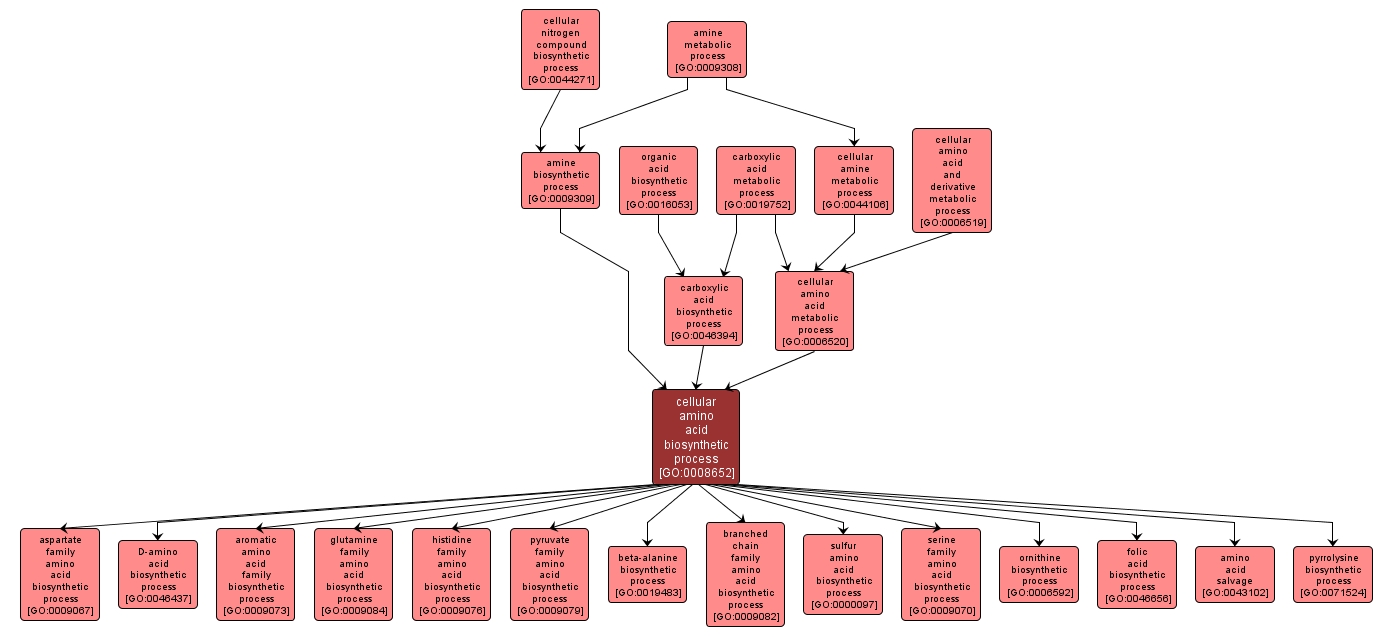GO TERM SUMMARY
|
| Name: |
cellular amino acid biosynthetic process |
| Acc: |
GO:0008652 |
| Aspect: |
Biological Process |
| Desc: |
The chemical reactions and pathways resulting in the formation of amino acids, organic acids containing one or more amino substituents. |
Synonyms:
- cellular amino acid biosynthesis
- cellular amino acid synthesis
- cellular amino acid anabolism
- amino acid biosynthetic process
- cellular amino acid formation
|
|

|
INTERACTIVE GO GRAPH
|














